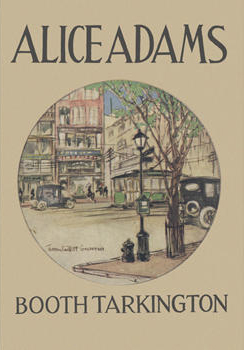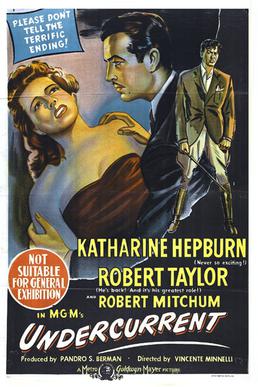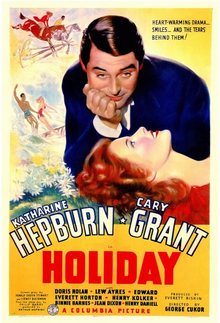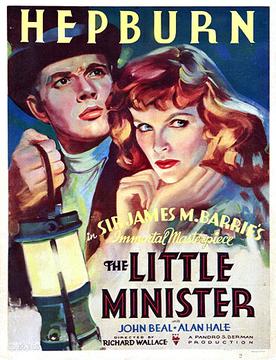
Katharine Houghton Hepburn was an American actress whose career as a Hollywood leading lady spanned six decades. She was known for her headstrong independence, spirited personality, and outspokenness, cultivating a screen persona that matched this public image, and regularly playing strong-willed, sophisticated women. She worked in a varied range of genres, from screwball comedy to literary drama, and earned her various accolades, including four Academy Awards for Best Actress—a record for any performer. In 1999, Hepburn was named the greatest female star of classic Hollywood cinema by the American Film Institute.

Alice Adams is a 1921 novel by Booth Tarkington that received the 1922 Pulitzer Prize for the Novel. It was adapted as a film in 1923 by Rowland V. Lee and more famously in 1935 by George Stevens. The narrative centers on the character of a young woman who aspires to climb the social ladder and win the affections of a wealthy young man named Arthur Russell. The story is set in a lower-middle-class household in an unnamed town in the Midwest shortly after World War I.

Bringing Up Baby is a 1938 American screwball comedy film directed by Howard Hawks, and starring Katharine Hepburn and Cary Grant. It was released by RKO Radio Pictures. The film tells the story of a paleontologist in a number of predicaments involving a scatterbrained heiress and a leopard named Baby. The screenplay was adapted by Dudley Nichols and Hagar Wilde from a short story by Wilde which originally appeared in Collier's Weekly magazine on April 10, 1937.

Morning Glory is a 1933 American Pre-Code drama film which tells the story of an eager would-be actress and her journey to stardom, and her gains and losses. The picture stars Katharine Hepburn, Douglas Fairbanks Jr., and Adolphe Menjou, was adapted by Howard J. Green from a then-unproduced stage play of the same name by Zoë Akins, and was directed by Lowell Sherman. Hepburn won her first Academy Award for Best Actress for this movie. Morning Glory was remade in 1958 under the title Stage Struck.

A Bill of Divorcement is a 1932 American pre-Code drama film directed by George Cukor and starring John Barrymore and Katharine Hepburn in her film debut. It is based on the 1921 British play of the same name, written by Clemence Dane as a reaction to a law passed in Britain in the early 1920s that allowed insanity as grounds for a woman to divorce her husband. It was the second screen adaptation of the play; the first was a 1922 British silent film also titled A Bill of Divorcement. The film was made again in 1940 by RKO Pictures.

Sylvia Scarlett is a 1935 American romantic comedy film starring Katharine Hepburn and Cary Grant, based on The Early Life and Adventures of Sylvia Scarlett, a 1918 novel by Compton MacKenzie. Directed by George Cukor, it was notorious as one of the most famous unsuccessful movies of the 1930s. Hepburn plays the title role of Sylvia Scarlett, a female con artist masquerading as a boy to escape the police. The success of the subterfuge is in large part due to the transformation of Hepburn by RKO makeup artist Mel Berns.

Little Women is a 1933 American pre-Code drama film directed by George Cukor, and starring Katharine Hepburn, Joan Bennett, Frances Dee, and Jean Parker. The screenplay, written by Sarah Y. Mason and Victor Heerman, is based on the 1868-1869 two-volume novel of the same name by Louisa May Alcott.

What Price Hollywood? is a 1932 American pre-Code drama film directed by George Cukor and starring Constance Bennett with Lowell Sherman. The screenplay by Gene Fowler, Rowland Brown, Jane Murfin and Ben Markson is based on a story by Adela Rogers St. Johns and Louis Stevens. The supporting cast features Neil Hamilton, Gregory Ratoff, Brooks Benedict, Louise Beavers and Eddie "Rochester" Anderson.

Pat and Mike is a 1952 American romantic comedy film starring Spencer Tracy and Katharine Hepburn. The movie was written by Ruth Gordon and Garson Kanin, and directed by George Cukor. Cukor directed The Philadelphia Story (1940) with Hepburn, and Cukor, Gordon and Kanin teamed with Hepburn and Tracy again for Adam's Rib (1949). Gordon and Kanin were nominated for the 1952 Academy Award for Best Original Screenplay for their work on Pat and Mike.

Undercurrent is a 1946 American film noir drama directed by Vincente Minnelli and starring Katharine Hepburn, Robert Taylor, and Robert Mitchum. The screenplay was written by Edward Chodorov, based on the story "You Were There'" by Thelma Strabel, and allegedly contained uncredited contributions from Marguerite Roberts.

Holiday is a 1938 American romantic comedy film directed by George Cukor, a remake of the 1930 film of the same name.

Pandro Samuel Berman, also known as Pan Berman, was an American film producer.

Keeper of the Flame is a 1942 American drama film directed by George Cukor, and starring Spencer Tracy and Katharine Hepburn, released by Metro-Goldwyn-Mayer (MGM). The screenplay by Donald Ogden Stewart is adapted from the 1942 novel Keeper of the Flame by I. A. R. Wylie. Hepburn plays the widow of a famous civic leader who has died in an accident. Tracy portrays a former war correspondent who intends to write a flattering biography of the dead man, only to find that his death is shrouded in mystery. Screenwriter Stewart considered the script the finest moment of his career, feeling vindicated by the assignment as he believed that Hollywood had punished him for years for his political views. Principal filming began in the last week of August 1942, four months after the release of the novel, published by Random House. The picture was filmed on a sound stage, with no location shooting. Hepburn had already begun a relationship with Tracy, and his heavy drinking led her to become his vigilant guardian during the filming.

Quality Street is a 1937 American historical comedy film made by RKO Radio Pictures. It was directed by George Stevens and produced by Pandro S. Berman. Set in 19th-century England, the film stars Katharine Hepburn and Franchot Tone. Joan Fontaine makes one of her early (uncredited) film appearances. The screenplay was by Allan Scott, Mortimer Offner, and Jack Townley, based on the 1901 play Quality Street by J. M. Barrie.

Way Back Home is a 1931 American Pre-Code drama film directed by William A. Seiter and starring Phillips Lord, Effie Palmer, Frank Albertson, and Bette Davis. The screenplay by Jane Murfin is based on characters created for the NBC Radio show Seth Parker by Phillips Lord.

The Little Minister is a 1934 American historical drama film starring Katharine Hepburn and directed by Richard Wallace. The screenplay by Jane Murfin, Sarah Y. Mason, and Victor Heerman is based on the 1891 novel and subsequent 1897 play of the same title by J.M. Barrie. The picture was the fifth film adaptation of the works, following four silent film versions. The original novel was the third of the three "Thrums" novels, which first brought Barrie to fame.

Edward Arthur Killy was an American director, assistant director and production manager in films and television. He was one of the few individuals to be nominated for the short-lived Academy Award for Best Assistant Director. During his 30-year career he worked on over 75 films and television shows.
Mortimer Offner was an American photographer, political activist, and screenwriter. He created portraits of leading film stars before successfully moving to screenwriting. His career ended when he was blacklisted because he was a communist.

Alice Adams is a 1923 silent film drama directed by Rowland V. Lee and starring Florence Vidor. It was produced by King Vidor. It is based on the 1921 novel Alice Adams by Booth Tarkington, later made into a 1935 sound film.
Jane Loring (1890–1983) was an American film editor and producer active during the 1920s through the 1940s. She was related to screenwriter Hope Loring.



















